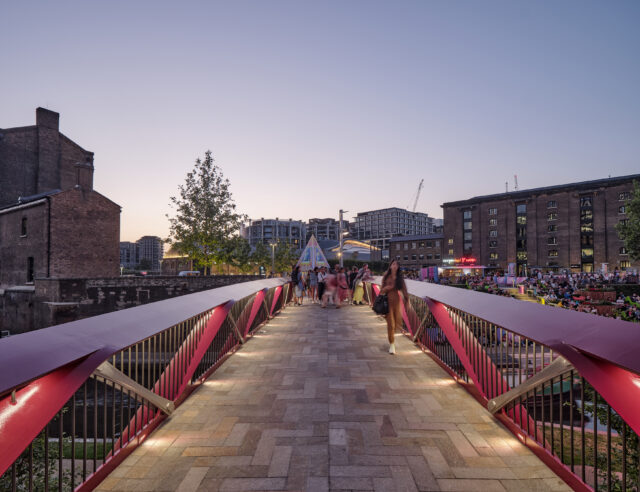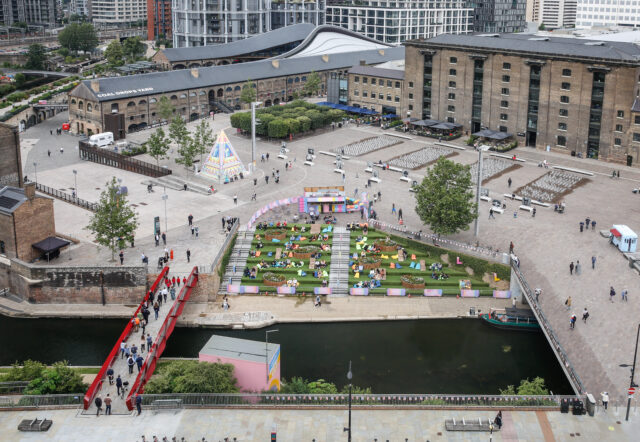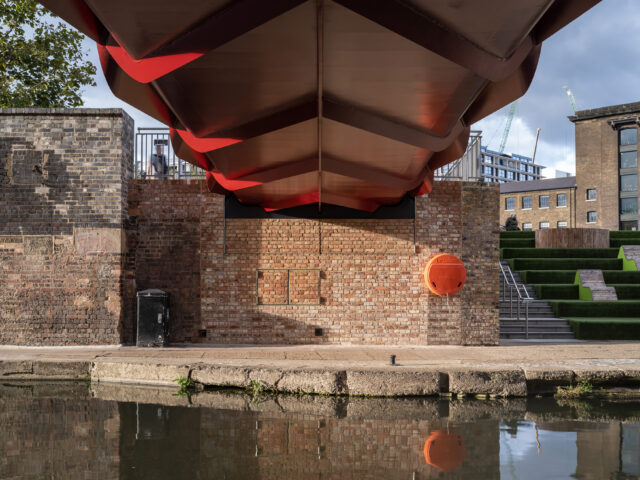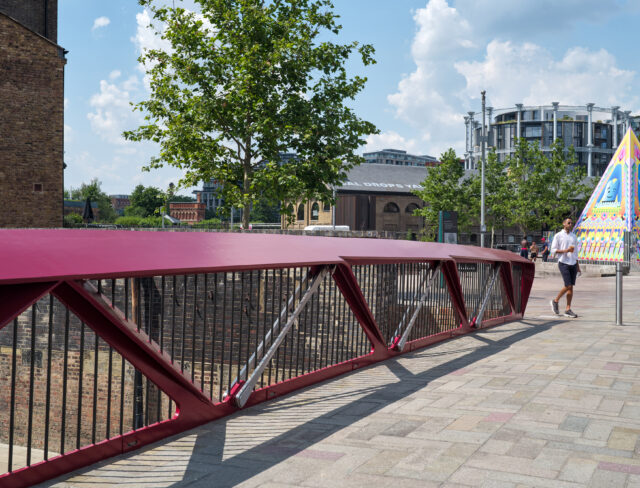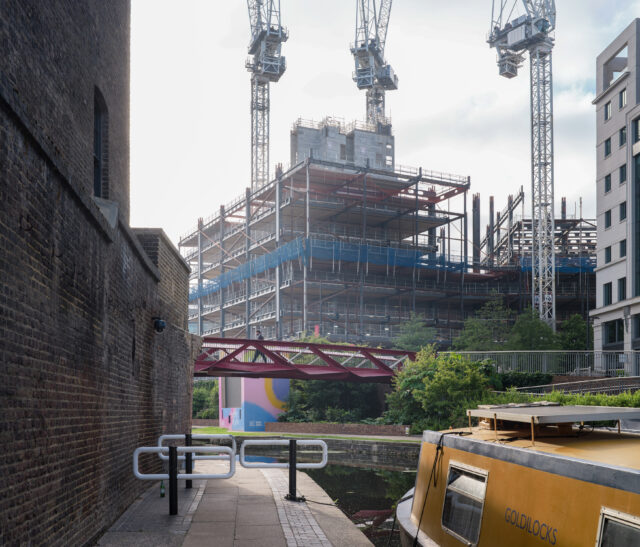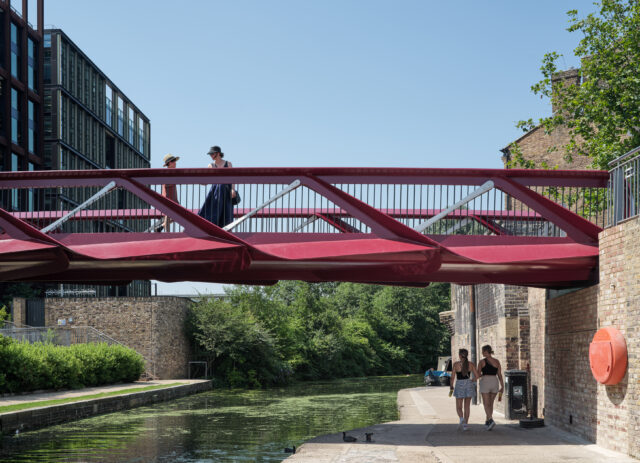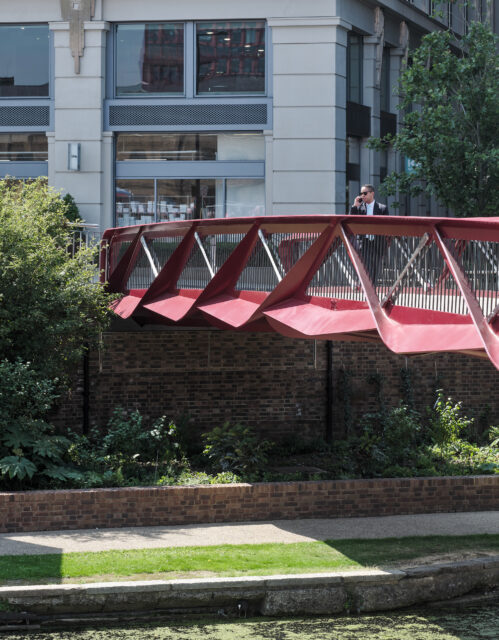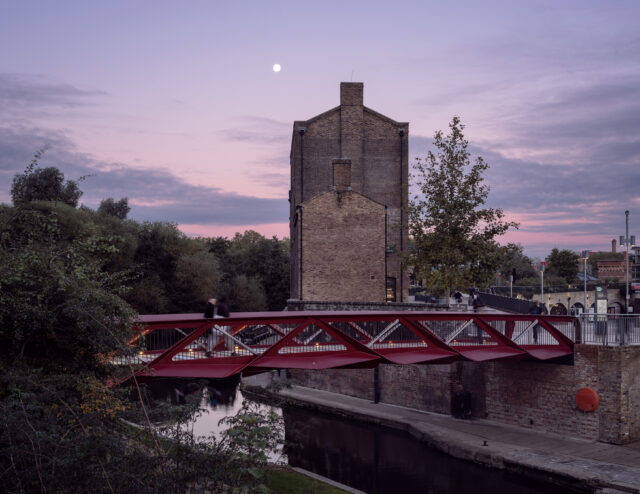Espérance Bridge
Category
MASTER PLANNING/LANDSCAPING: Public Realm/Landscaping
Company
Moxon Architects Ltd
Client
Argent KCCLP
Summary
Following the restoration and reopening of Coal Drops Yard in 2018, The Espérance Bridge represents the final step of reinstating the heritage of this part of King's Cross. It takes inspiration from lost railway bridges that crossed the canal during its industrial heyday. Often chosen for its efficiency, the truss form in this case has been developed and finessed beyond expectations for this typically humble structure. Components have been optimised to express their alternately compressive and tensile load requirements. Nodal connections have been carefully considered, creating smoothly sculpted transitions between elements. The repetitive modular form creates a seemingly complex assembly out of a series of repetitive cells.
While the bridge’s long future in operation will certainly be sustainable, several aspects of its construction dramatically impacted its whole life carbon consumption. In bridge design, half of the effort occurs out of sight, below ground. Elegant structures usually sit above significant foundations. For the Espérance Bridge, the design team utilised an existing retaining wall for the entire southern abutment after detailed investigations confirmed its surplus capacity. In terms of carbon this meant an entirely ‘free’ bridge support: a significant reduction in both concrete and steel reinforcing. A similar approach was pursued at the north abutment where a previous bridge once stood. While the heritage structure was deemed inadequate, it was utilised for excavation and ground stability. While this repurposing approach to construction is hard to appreciate now, (as the abutments are literally buried), it had a profound impact on the programme, material and energy consumption.
The Espérance Bridge plays a larger role than connecting A to B. As a bold contribution to its surroundings, it defines space beyond its edges, serves as a landmark and provides a platform for interaction. With a neighbouring crossing just to the east and another not far to the west, this bridge had to punch above its weight to justify its role in the nearly complete Granary Square. While it does strengthen the connection between Coal Drops Yard and Pancras Square, its impact on the Ghat Steps ‘urban theatre’ is more profound. This bridge completes the enclosure of this civic space, simultaneously forming a border, a backdrop and a side balcony to observe and participate in events along the canal and adjacent steps. By acting as both an object in the built environment and an extension of that environment, the bridge makes a strong contribution to its surroundings where it already feels completely at home.
The bridge was named by the children of the King's Cross Academy who were inspired by the Espérance Club (1895-1914), a pioneering social project for local sewing girls created by two radical suffragettes, Mary Neal and Emmeline Pethick Lawrence. The naming of the bridge was a great opportunity to involve the local community in this exciting new project. Students will use the bridge on a daily basis and will now feel a strong sense of pride and ownership. Having studied bridges as part of the naming process, its unusually expressive form should fill them with wonder and delight.

